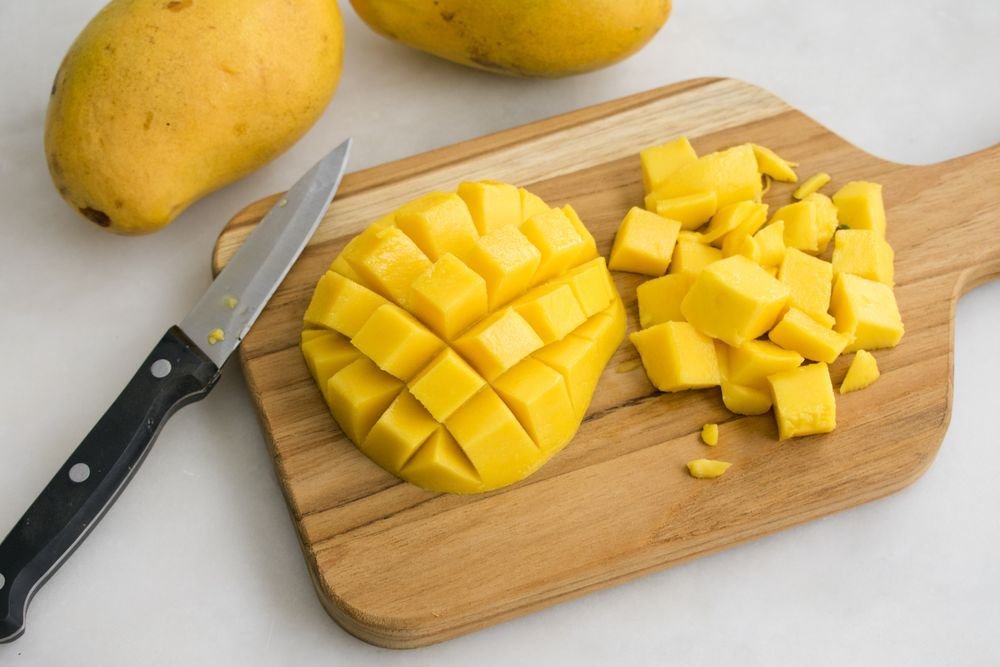How to Cut Mango Without Mess: A Step-by-Step Guide
Mangoes are one of the most delicious and refreshing fruits, but cutting them can be a bit tricky and messy. The sticky flesh and slippery skin often lead to fruit flying everywhere and hands that feel like they’ve been covered in glue. Luckily, with a few simple tricks and techniques, how to cut mango without mess and enjoy them hassle-free. Here’s your guide to cutting a mango with ease, keeping both your kitchen and hands clean.
Why Is Cutting a Mango Messy?
Mangoes have a large, flat pit in the center, surrounded by juicy flesh. The fruit’s texture can make it difficult to cut evenly, and the slippery skin can cause the knife to slide. These factors combined lead to uneven cuts and sticky surfaces. Plus, if you don’t use the right technique, juice can splatter everywhere, making cleanup a chore.
But don’t worry—once you learn the best way to cut a mango, you’ll be able to slice it like a pro!
Step-by-Step Guide to Cut Mango Without Mess
1. Choose a Ripe Mango
First, you’ll want to select a ripe mango. A ripe mango will give slightly to gentle pressure but shouldn’t be mushy. The skin will typically show a slight change in color, depending on the variety, but the most reliable indicator is its firmness and the slightly sweet aroma at the stem end.
2. Gather Your Tools
Before you start, gather the following tools:
- A sharp knife (preferably a chef’s knife)
- A cutting board
- A bowl for collecting the mango slices
- A spoon (optional)
3. Wash the Mango
Give your mango a quick rinse under cold water to remove any residual dirt or pesticides. This step will also help remove some of the natural sap that could make your hands sticky during cutting.
4. Identify the Mango’s Pit
Mangoes have a large, oval pit that runs vertically through the center of the fruit. Place the mango on its side and observe the shape of the pit to determine the orientation of your cuts.
5. Make the First Cut: Slicing Off the Sides
Hold the mango upright with the stem end facing you. Using your knife, make a vertical cut about 1/4 inch from the center of the mango, slicing down until you hit the pit. This should give you a wide, flat slice on one side of the pit. Repeat this step on the other side to remove the “cheeks” of the mango, which are the two largest pieces of flesh.
By cutting around the pit, you’ll avoid making a mess with the sticky, fibrous area around it. You should now have two large, smooth halves of mango.
6. Score the Mango Flesh
Next, take each mango half and score the flesh in a crisscross pattern, making sure not to cut through the skin. You can score the mango horizontally and vertically to create a grid-like pattern. The closer together the cuts, the easier it will be to separate the flesh into small cubes or slices.
7. Scoop Out the Mango Flesh
Use a spoon to gently scoop the scored mango out of the skin. The cubes should come out easily, and the skin will remain intact. If you prefer mango slices, you can use the knife to cut along the grid lines you made earlier.
8. Remove the Remaining Flesh from the Pit
Once you’ve removed the two halves, you can still salvage the flesh surrounding the pit. Hold the pit and carefully trim off any remaining mango flesh with your knife. This part may be a little trickier, but with a sharp knife, it should come off easily.
9. Enjoy Your Mango
Once the mango is fully cut, you can either serve it in the bowl or eat the cubes directly. The mess should be minimal, and your hands will remain relatively clean. Enjoy!
Additional Tips for Cut Mango Without Mess
- Use a Mango Slicer: If you want a mess-free, quick method, you can invest in a mango slicer, a handy tool that cuts both the cheeks and removes the pit in one swift motion.
- Chill the Mango: A colder mango is easier to handle. It’s firmer and less prone to squishing or slipping.
- Work Over a Plate or Bowl: Instead of cutting directly on the counter, use a plate or shallow bowl to catch the juice as you cut. This will reduce spills and minimize cleanup.
- Cutting in the Kitchen Sink: If you’re worried about juice splattering, you can cut the mango in the sink. The surface area will catch any juice, and cleanup is a breeze.
Conclusion
Cutting a mango doesn’t have to be messy. With the right technique, a sharp knife, and a little practice, you’ll be able to slice and dice your mango like a pro. Whether you’re enjoying it in a salad, smoothie, or just as a snack, you’ll avoid the mess and save time. By following these easy steps, you’ll not only preserve the mango’s shape but also keep your kitchen neat and clean.
Mangoes are a healthy, refreshing treat, and now you can enjoy them without the sticky aftermath!

